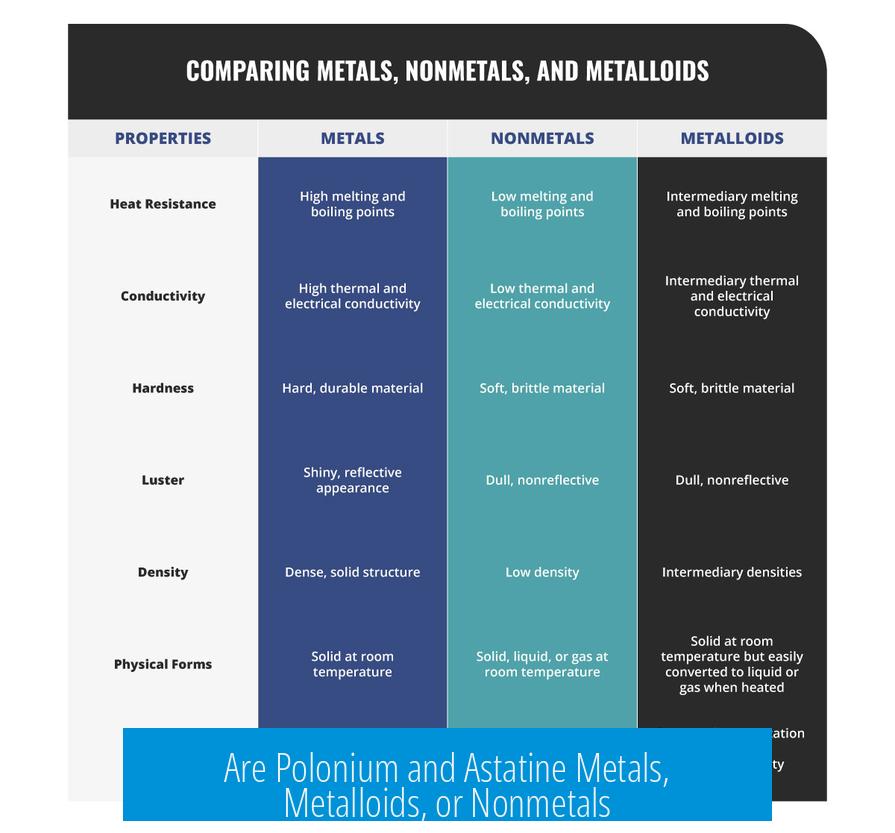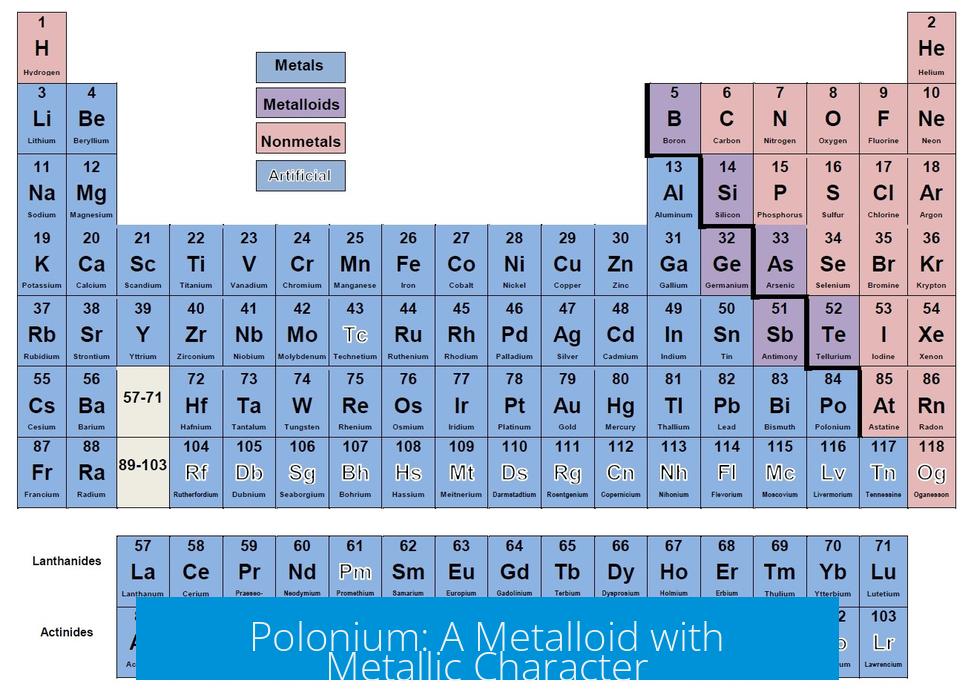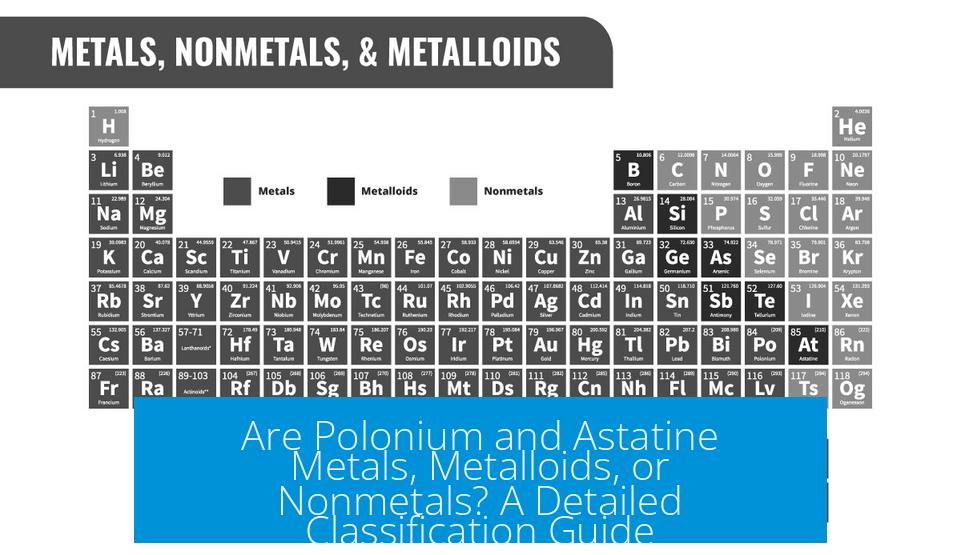Are Polonium and Astatine Metals, Metalloids, or Nonmetals?

Polonium is generally classified as a metalloid with significant metallic character, while astatine’s classification remains uncertain due to its extreme radioactivity and limited availability.
Polonium: A Metalloid with Metallic Character

Polonium sits near the borderline between metals and metalloids on the periodic table. It is typically regarded as a metalloid because it exhibits properties between metals and nonmetals. Compared to other metalloids like tellurium and selenium, polonium shows more metallic traits. This includes better electrical conductivity and malleability.
However, the precise classification of polonium can vary. Some sources describe polonium as close to the metal-metalloid boundary, reflecting its somewhat ambiguous nature. The element’s behavior changes depending on context, which has led to differing opinions about where it fits chemically.
- Polonium conducts electricity more than typical metalloids.
- It has a metallic luster but forms compounds typical of metalloids and metals.
- Its position in the periodic table lies within the p-block where metalloids are common.
Astatine: An Elusive Element with Unknown Classification
Astatine’s classification is difficult to assign with certainty. This difficulty stems from its extreme radioactivity, which limits the amount of pure substance available for study. The element decays rapidly and sublimates from solid to vapor quickly due to self-heating from radioactive decay.
Because these conditions prevent detailed physical and chemical analysis in bulk form, scientists cannot confidently characterize astatine’s metallic, metalloid, or nonmetallic attributes. Most hypotheses predict it might be metalloid or possibly a halogen nonmetal like iodine, but definitive conclusions are lacking.
- The tiny quantities synthesized disappear before extensive testing.
- Properties inferred mainly from periodic trends and small-scale experiments.
- Its behavior lies between halogens and metalloids in the periodic table.
Summary of Classification
| Element | Classification | Key Reasons |
|---|---|---|
| Polonium | Metalloid (Close to metal) | Greater metallic character; ambiguous between metal and metalloid |
| Astatine | Uncertain (Likely metalloid or nonmetal) | Extreme radioactivity and limited sample sizes prevent clear classification |
Key Takeaways
- Polonium is typically considered a metalloid with a stronger metallic nature than related elements.
- Astatine’s classification remains uncertain due to its instability and scarcity.
- Polonium’s properties straddle metallic and metalloid behaviors, reflecting borderline chemistry.
- Astatine is too radioactive for thorough bulk property analyses, leaving its classification speculative.





Leave a Comment